I am J.J. in charge of this blog and I am climbing Mt. Takao every year. Mt. Takao is easily accessible for hikers as it is only one hour from central Tokyo. The mountain became famous world wide as the Michelin Guide gave it three stars. Now it is an extremely popular spot for repeating tourists from home and abroad. Wheelchair users can enjoy hiking because cable cars available.
As we get frequent inquiries such as “Is it possible for wheelchair users to go up Mt. Takao?” , five of us went to the mountain with the mind of “Hiking for wheelchair users” as a challenge and as a mission of our activities of Accessible Tokyo.
NHK TV covered our field work today and it will go on air on Oct.21, 2016.

The station received a Good design award in 2016 for its fashionable appearance.

Cable car
We got on the cable car from Kiyotaki Station which is about 5 minutes walk from Keio takaosanguchi Station.

Let’s go! Station staff prepared a board to alleviate the slope.


They use adequately made original boards to adjust the slanted platform and the flat floor of the cable car.
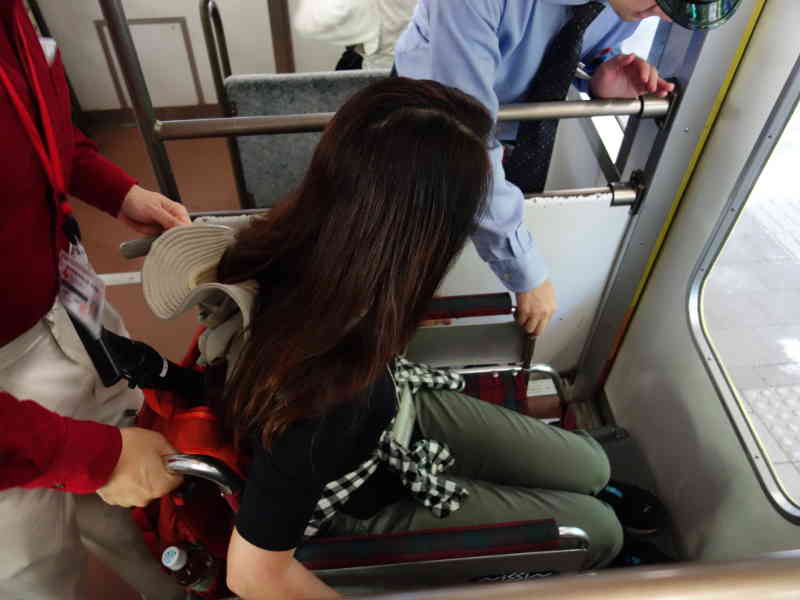
It takes about six minutes to arrive at Takaosan Station. The staff also prepared a board to help us get off.
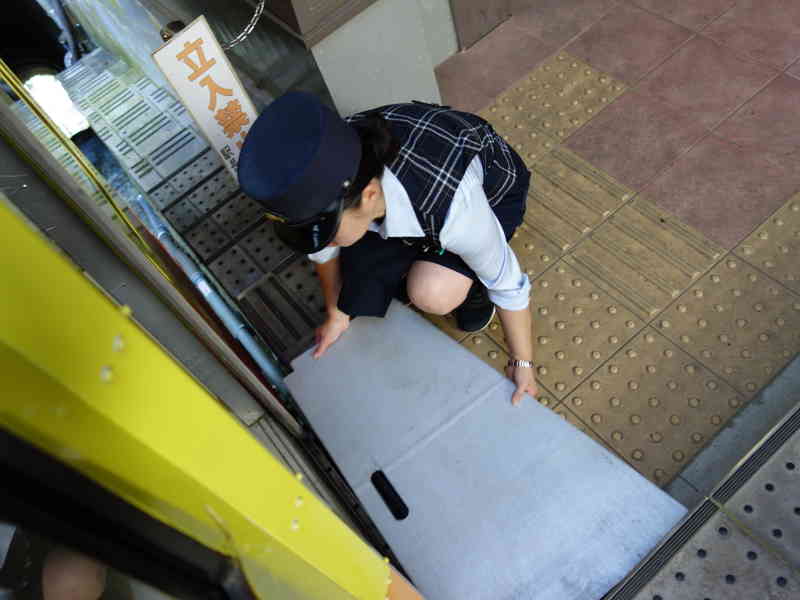

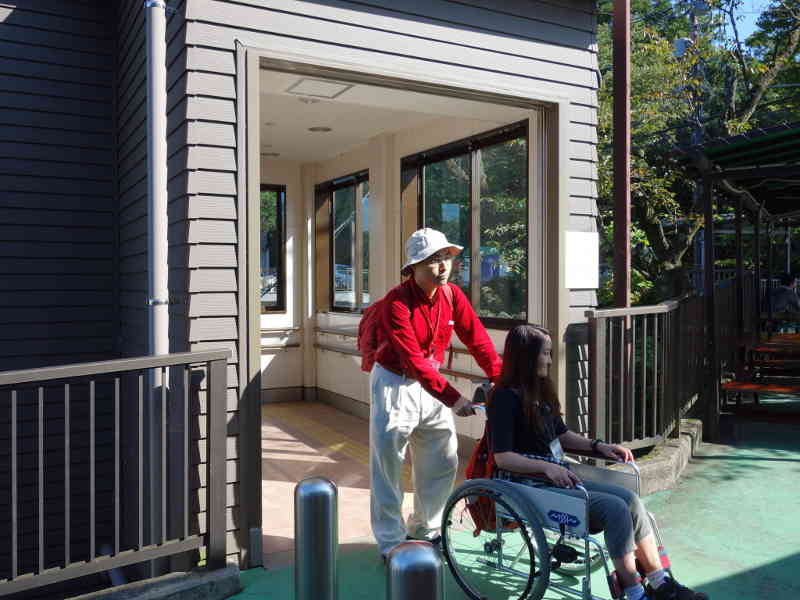
The view from the mountainside is good enough and luckily we were able to get the whole view of Tokyo thanks to the fine weather.

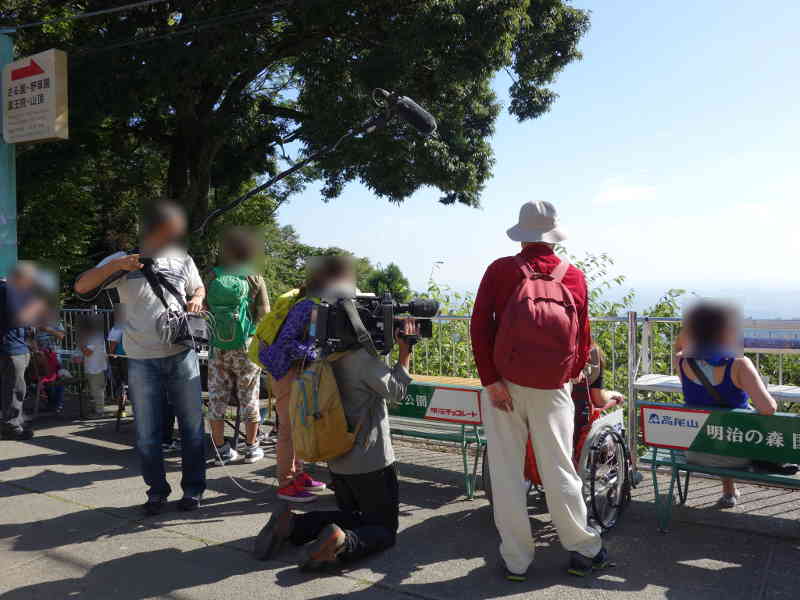
Wheelchair users could get to this point without helpers (please note individual differences).
Takaosan Yakuoin Temple
The road from here to Takaosan Yakuoin Temple is relatively flat and well maintained.

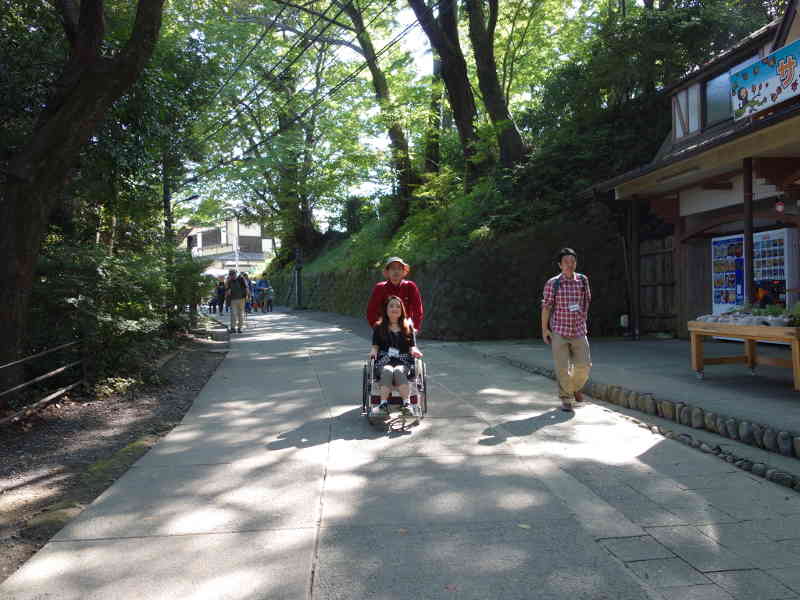
As we walk further, there is the Mt. Takao Monkey Park and The Wild Plant Garden on the left. Unfortunately, this place is not accessible for wheelchair users as the facilities have a second floor and they only have stairs.
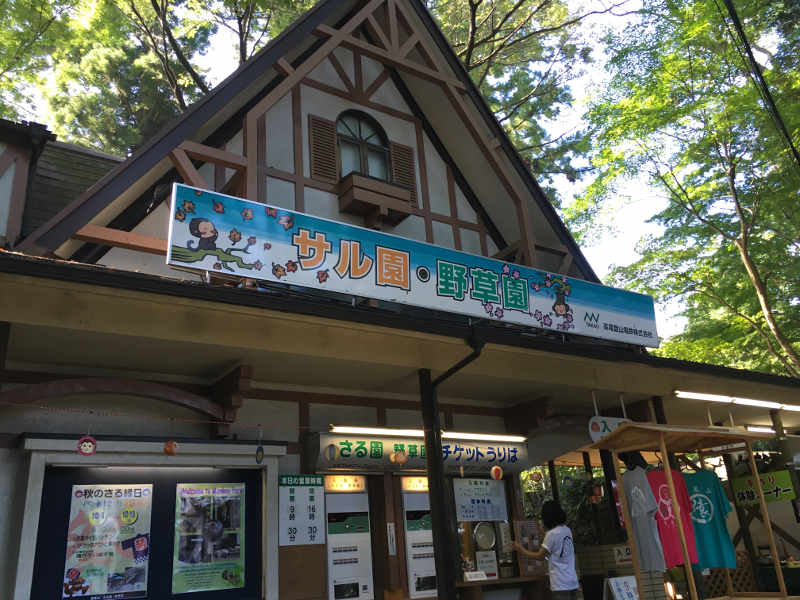
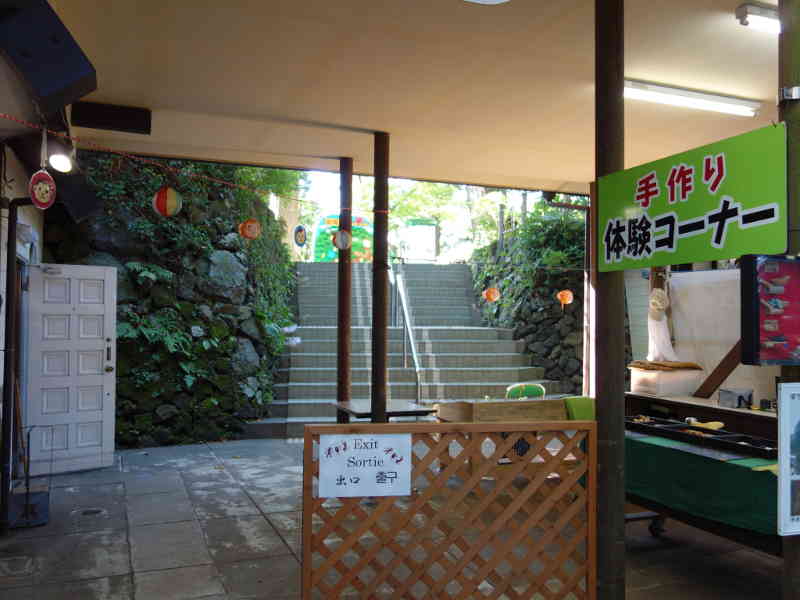
Proceeding further, there is a so called “male slope” with long stairs on the left and a “female slope” as the detour course on the right.
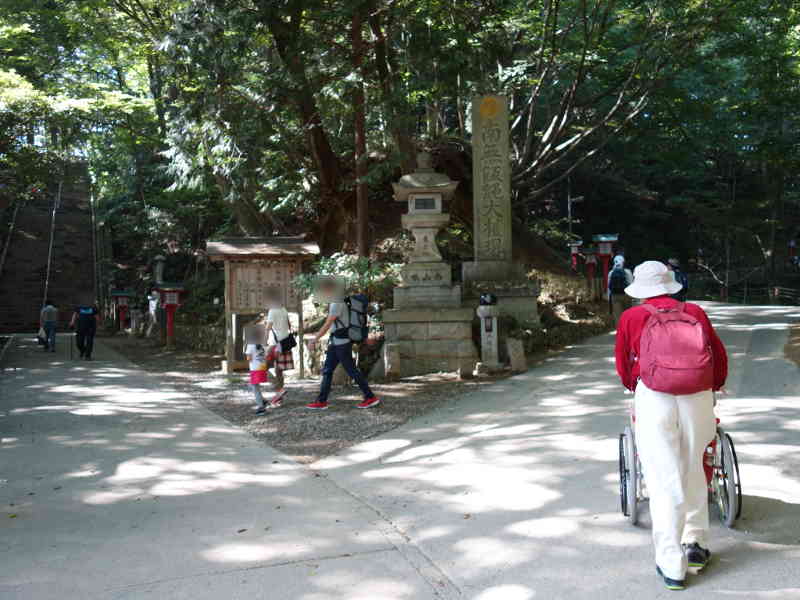
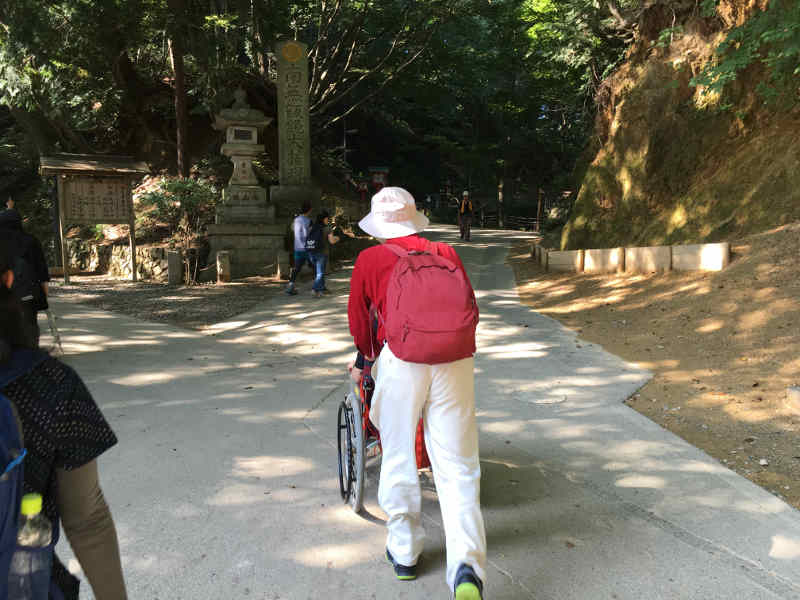
A wheelchair user would choose “female slope” with no hesitation. The slope is getting steeper.
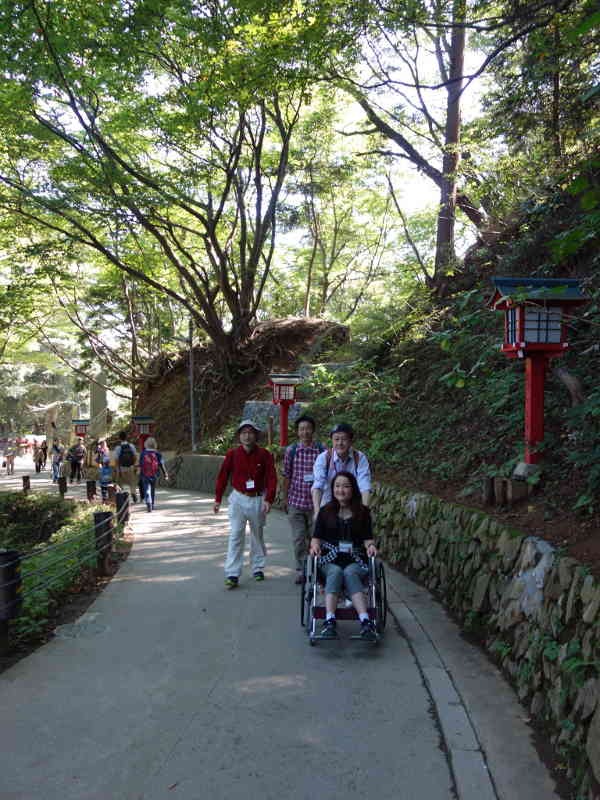
There are stairs at the entrance of Takaosan Yakuoin Temple. Wheelchair users may use the narrow path on the left side of the temple gate.
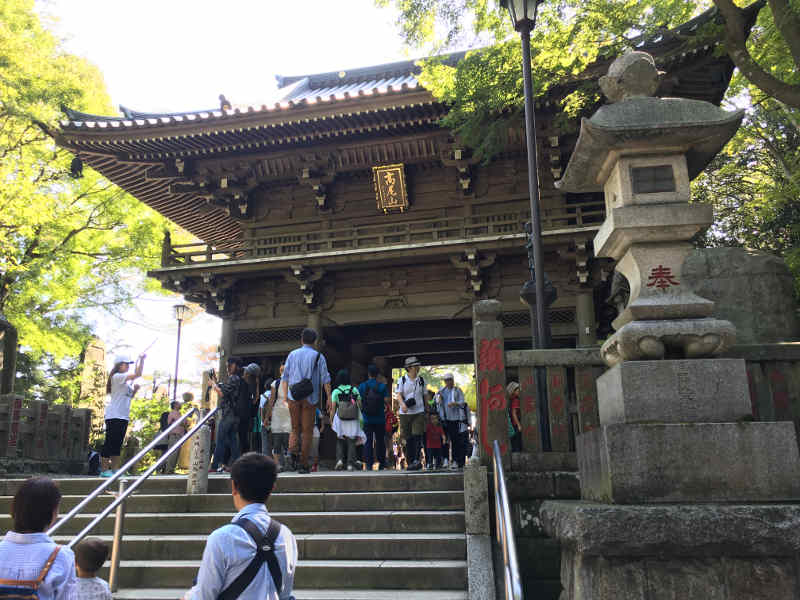


Wheelchair users choose the narrow road on the left side of the temple gate of Takaosan Yakuoin Temple. This route is not shown in the map for hikers. The road from here is not paved, sometimes with gravel or bumpy. As we approach the mountaintop the slope is getting steep.
There are stairs in front of the Main Gate which is part of Route 1 where regular hikers take. However, wheelcair users should go straight instead and turn left just before Daihonnbou.
The peak





At the steep slope, we used the triangular bandage cloth that we had. This cloth helped us disperse the weight across two people pulling the wheelchair at the front side. We used the triangular bandage cloth we had but some parts of the cloth were damaged. We should have prepared something like ropes with enough strength.
There are some steep slopes to get to the peak and men’s strength is required. But by dispersing the weight at the front side with the cloth, even females can support.


It took us about thirty minutes from Takao Yakuoin Temple to the peak.


It took us about two hours to arrive at the peak by using the cable car including the waiting time (it depends on the congestion and walking pace).
Descending
We will take the same route to climb down the mountain. We should be careful about the speed of descent when we hold the wheelchair in a forward facing position.
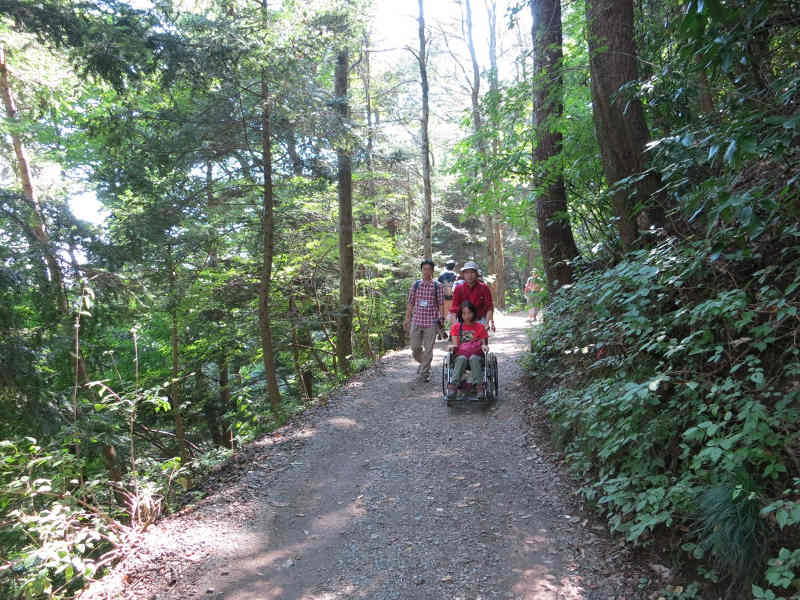
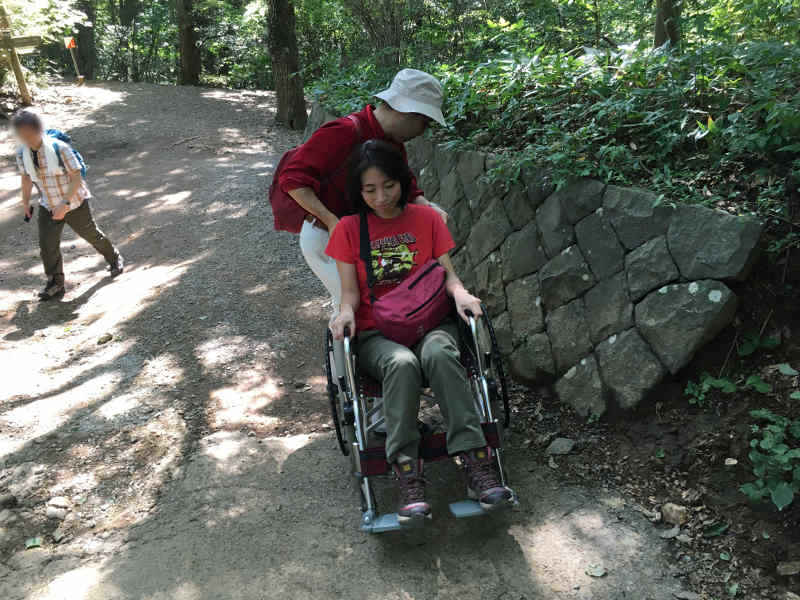
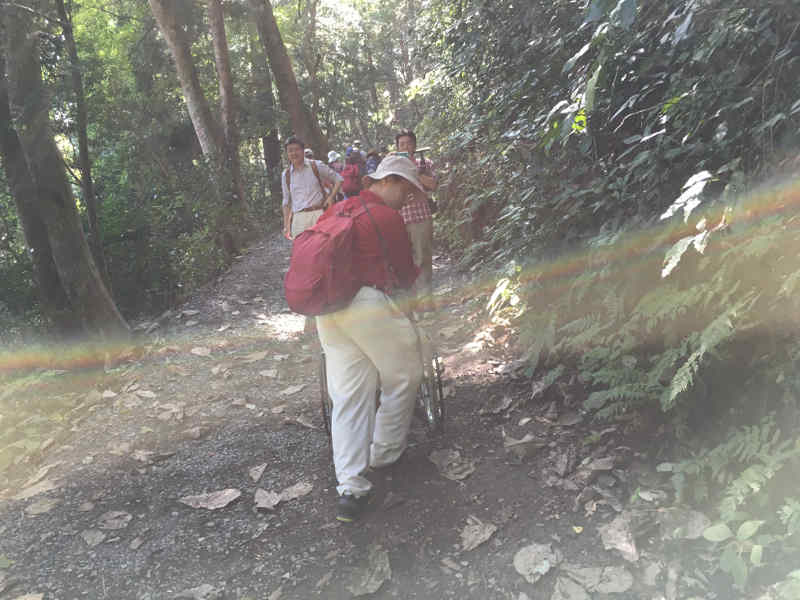
Holding the wheelchair in forward facing position is dangerous at some parts.
Our conclusion
Our conclusion is “It is possible for wheelchair users to get to the peak”
Kiyotaki Station – mountainside: a wheelchair user alone or with one helper can go up by using the cable car.
Mountainside – peak: three helpers are necessary
It is dangerous when the road gets muddy on rainy days as some parts are not paved. Therefore, fine weather and three helpers or more are required.
I experienced getting on the wheelchair during the field work myself. I was able to enjoy the landscape on the way, the view from the mountain and feel the wind in the nature. But the helpers were devoted to support the wheelchair with commitment to safety and I do not think they had time to enjoy the hiking itself. The trustworthy relationship between the wheelchair users and helpers is necessary, as flexible responses are required.
Let us add some conditions other than listed above, because wheelchair users should be aware of the risks of the hiking.
- During the descent, there were some dangerous unpaved parts if the helpers were to hold the wheelchair in a forward facing position. So the wheelchair user had to go down backward for a couple of meters (the helper held the wheelchair while directing his/her back toward the lower part of the slope, watching the direction they were descending over his/her shoulder).
- Wheelchairs with wheels of smaller diameter (mainly electric wheelchairs) seem to have difficulties on unpaved roads.
- When two people pull the wheelchair, and there is a difference between each one’s angles to pull, the wheelchair user feels uncomfortable. Pullers on the front side should synchronize their walking pace and pulling power, and be careful about the front wheels bumping against the helper’s feet.
- Our conclusion is based on the conditions of this field work, fine weather, roads without muddy parts, a well maintained wheel chair, and a female rider on the wheelchair and helpers (two males and one female) are all in good shape. So please keep these conditions in mind and make a judgment.
Restrooms at Mt. Takao
Several restrooms with wheelchair access are available at Mt. Takao.
1. Kiyotaki Station
The function as a restroom with wheelchair access is satisfactory, and clean.


2. Mountainside
The function as a restroom with wheelchair access is sufficient but the cleanliness of appearance could improve.


3. The neighborhood of the mountaintop
There is a two story building and the restrooms here are the best maintained at Mt. Takao. The function as a restroom with wheelchair access is satisfactory, a baby changing bed and a warm water washing toilet is equipped.


4. The restrooms in the visitor center at the mountaintop.
There are the restrooms on the right hand side of the visitor center at the mountaintop. A restroom with wheelchair access is provided which are clean as they were newly constructed. Warm water washing toilets are equipped.



We recommend using the restroom at Kiyotaki cable car station when you start and at the mountaintop area before going down.
Lastly
Our activities of Accessible Tokyo started when the last Tokyo Olympic and Paralympics games were held in 1964. Large number of tourists will be coming to Tokyo area from home and abroad as the next Tokyo Olympics and Paralympics in 2020 are coming closer. The accessibility at tourist spots will get much attention and NHK TV covered our activities this time. We hope that our activities will be disseminated to many people, and that this blog will help people who are thinking about hiking and help overcome any hesitation.
